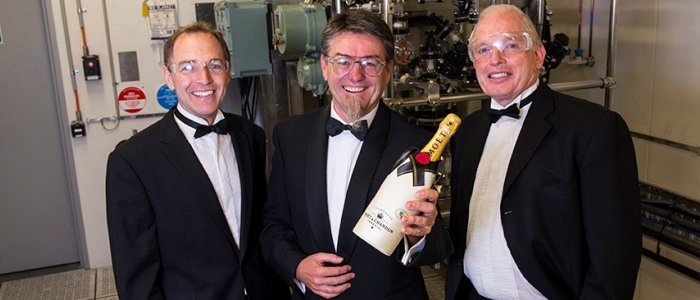News
3D printing bone tissue
Jun 28 2022
Imagine my excitement; a young research trainee excitingly opening the reviewers comments on my first major paper submitted for publication.

Ten typed pages of reviewer’s comments!
I started reading… ‘More chest-beating…’.
Oh. Ten pages, and hardly a compliment in sight.
Little did I know that this was a sign of things to come for the next thirty years. The excitement of research: Planning, executing experiments, interpreting the data, discovering new things and presenting new knowledge was to be continually tempered by others skilled in the art of scathing personal and scientific criticism.
Little did I know the excitement of publishing a high profile discovery in Nature or Science journal would be dented by the bitter disappointment of (just) failing to secure the funding that would allow us to continue to develop our research.
The response of my supervisor to that original berating was to be cool, calm and collected. To meticulously argue the point by point criticism and we eventually had our article published.
After many years I was able to control the natural tendency to throw back abuse, to adapt this more tempered and productive approach, and in the end to afford myself a wry smile.
I have seen many approaches to the disappointment of research funding failures including anger, frustration, sadness and resignation. Probably my own most bizarre response was to buy a case of beer and spend the weekend painting the lounge room, after a significant funding bid failed at the last hurdle and we were notified late one Friday afternoon.
As in sport, success comes to those who respond to disappointment in the only way you can, that is if you eventually want to win. You must train harder, become more cohesive as a team, lift the vision, build each others confidence and try again.
Was it worth the heartache over thirty years? Bloody right it was!
I could not have imagined that from the “more chest-beating ….” Accusations, I would go on to form a globally renowned research team with an amazing collection of individuals, housed in world-class facilities right here in Wollongong.
I would go on to meet and work with extraordinary people like Prof. Graeme Clark (inventor of the multi electrode bionic ear) and Prof. Alan MacDiarmid (Nobel Prize Winner in 2000).
Together with colleagues and collaborators, I have worked to build a knowledge base that has resulted in developments including new artificial muscle technology, new implantable drug-delivery systems and better ways to convert sunlight into electricity.
Working with colleagues at the University of Wollongong, I have been given the opportunity to develop new devices to train AFL players how to land properly. The infamous Bionic Bra project has also been a privilege to work on. All of these projects brought closer to practical application by advances in additive fabrication, including 3D printing.
It has been a blast!
And now we are embroiled in some really big challenges developing new electromaterials for epilepsy detection and control as well as understanding and modifying the biological processes leading to schizophrenia.
We’re also using 3D bio-printing to come up with ways to repair and re-grow damaged nerves and muscles.
It has been a privilege and would I do it all over again? Bloody right I would!
Free event: Come along to a free event for National Science Week at the Wollongong Science Centre on Wednesday August 19. A panel discussion – Why would you want to be a research scientist?
Pictured from left: Professors Geoff Spinks, Gordon Wallace and David Officer celebrate a research victory.













